We enjoyed watching the ravens on the rooftops out our windows this morning. They have a musical, almost mechanical-sounding, call. Not raucous like our crows and ravens. Very "chirpy".
The tiny breakfast serving area isn't as well-organized as it could be, so every time we went to get something we had to wait in a single, slow-moving line. Since they didn't have trays, meaning several trips there to assemble one's breakfast, it would have been better if they made it permissible simply to reach through the line for a single item. But the food was fine, and the dining area was pleasant. We had breakfast with Ed and Joyce Tyler.
Corso Cavour to Piazza Cahen
Around nine o'clock Karen and I set out on a walk (the morning was free). We went along the Corso Cavour in search of Chiesa di Santo Stefano. Along the way we met a few walkers. Old ladies on their way to or from church, a thirty-something man with a puppy (who got in trouble for eating poop). We found Santo Stefano, but it was thoroughly scaffolded and wrapped for restoration. There was a crane on site, with stacks of building materials, so we assume there's actual work being done.






|
We continued along Corso, past a pretty yellow and white Baroque church, which was closed until Mass at 11:30, and on to the end of the Orvieto plateau and the remains of Fortezza Albornoz, most of which was torn down by the Orvietans about 30 years after it was built in the 1350s to enable to Papacy to oppress them. The sign to the left of the arch proudly proclaims "GIARDINI COMUNALI". Fantastic viws all around, and a lovely public garden where the Castle once stood. It was built by order of the Spanish Cardinal Albornoz under orders from Pope Innocent VI and designed by condottiero and military engineer Ugolino di Montemarte. The Albornoz fortress stands on an area that was once occupied by a temple, known by the Etruscan name of Augurale. After the Sack of Rome at the end of 1527 Pope Clement VII took refuge in Orvieto. To ensure that the city would be sufficiently supplied with water in the event of a siege, he gave orders for the digging of the now famous artesian well Pozzo di San Patrizio (1528-1537) -- 175 feet deep and 45 feet wide, with a double helix staircase. We went for the a look at the Pozzo, but neither of us felt like paying money to walk down into (and back up out of) a dark, damp, chilly hole in the ground.







|
Duomo di Orvieto
During this afternoon we had a guided tour of the Duomo and the Museo Claudio Faina (Archaeology Museum). There was a funeral under way in the Cathedral, which compromised some of our tour, but we saw the relevant things, especially the Capella San Brizio with its Luca Signorelli cycle of frescoes.
The origins of the church go back to the journey of a Bohemian priest in 1263 to Rome. It seems that Peter of Prague had difficulty accepting the transformation of the bread and wine into the body and blood of Christ. He made a pilgrimage to the tomb of St. Peter to pray for faith. En route home, while celebrating Mass at Bolsena, he witnessed blood dripping from the Host so copiously that it soaked the altar cloth. Pope Urban IV, who happened to be in Orvieto, was so profoundly moved when he learned what had happened that he ordered that the cloth be brought there for safekeeping. The event led to the Pope's establishing the Feast of Corpus Christi for the entire Christian world and the construction of the cathedral to house the relic. The foundation stone for the building was laid in 1290, but three centuries passed before the work was finished.

|

|

|

|

|

|

|

|

|
| Duomo | Façade Upper | Façade Lower | Nave | Apse | Altar | Baptistry | Reliquary | Corporale |
San Brizio Chapel -- Luca Signorelli cycle (Δ indicates "detail"). See also Paradoxplace photos.
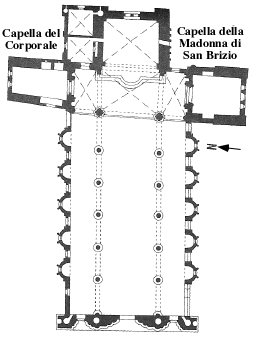
|
NORTH WALL
Entry 
Apocalypse Δ Δ Δ |
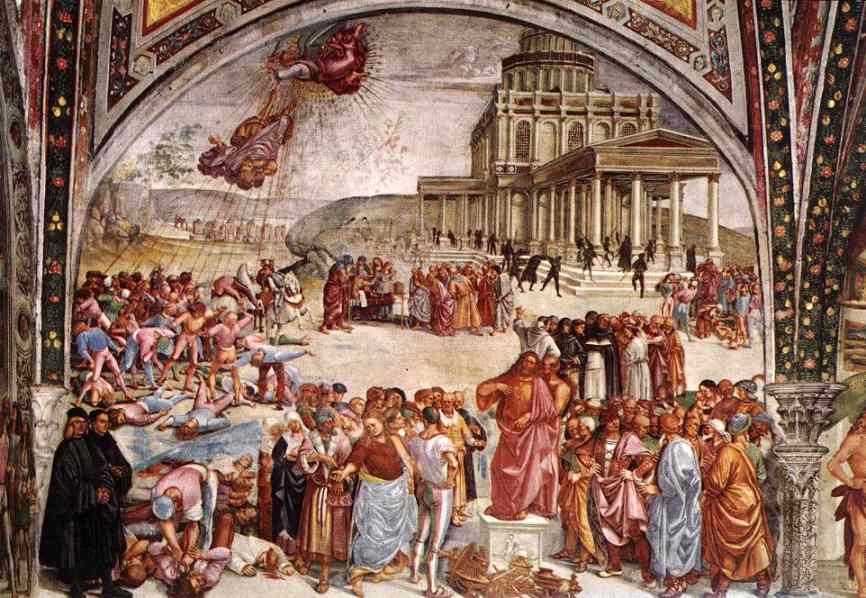
Anti-Christ Δ Δ Δ Δ | EAST WALL |
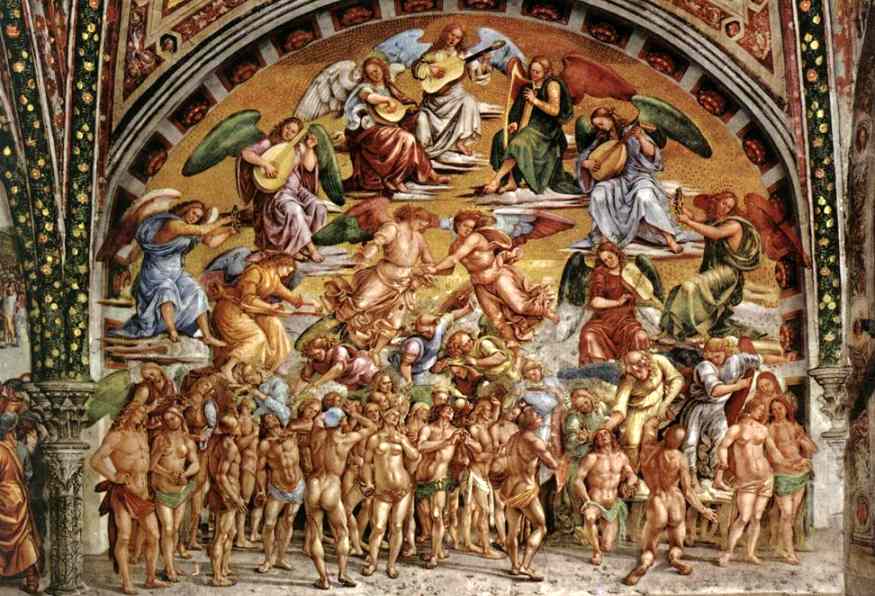
The Elect Δ Δ |
SOUTH WALL Altar 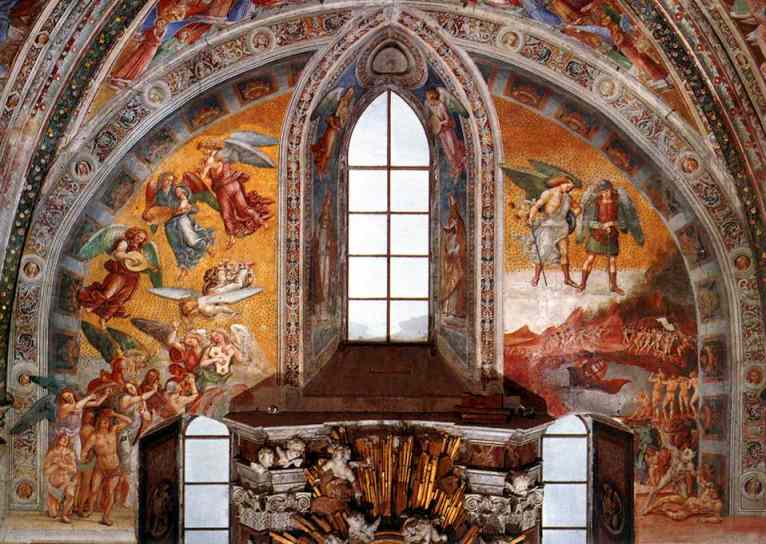
Heaven - Hell Δ Δ Δ Δ | ||
|---|---|---|---|---|---|---|---|
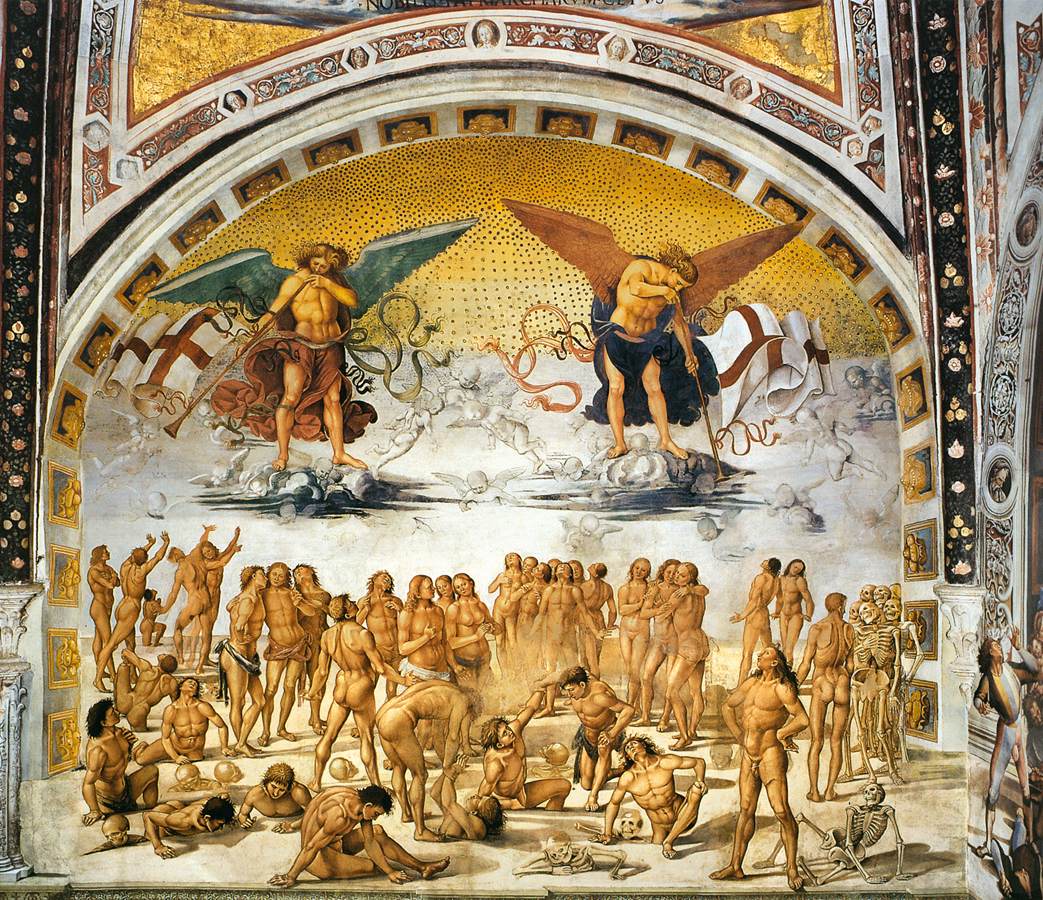
Resurrection of the Dead Δ Δ Δ Δ Δ | WEST WALL |
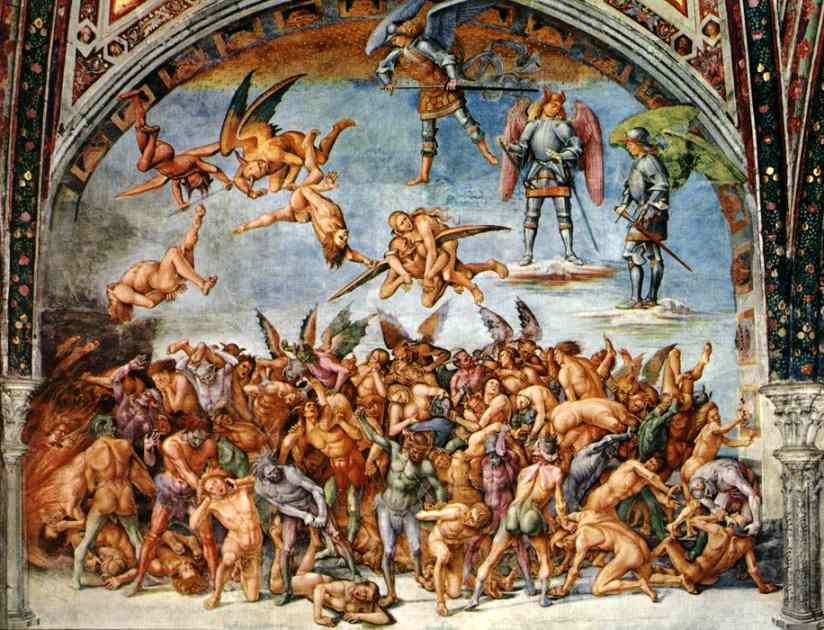
The Condemned Δ Δ Δ Δ Δ Δ |
Frescoes below the Signorelli cycle and above on the ceiling
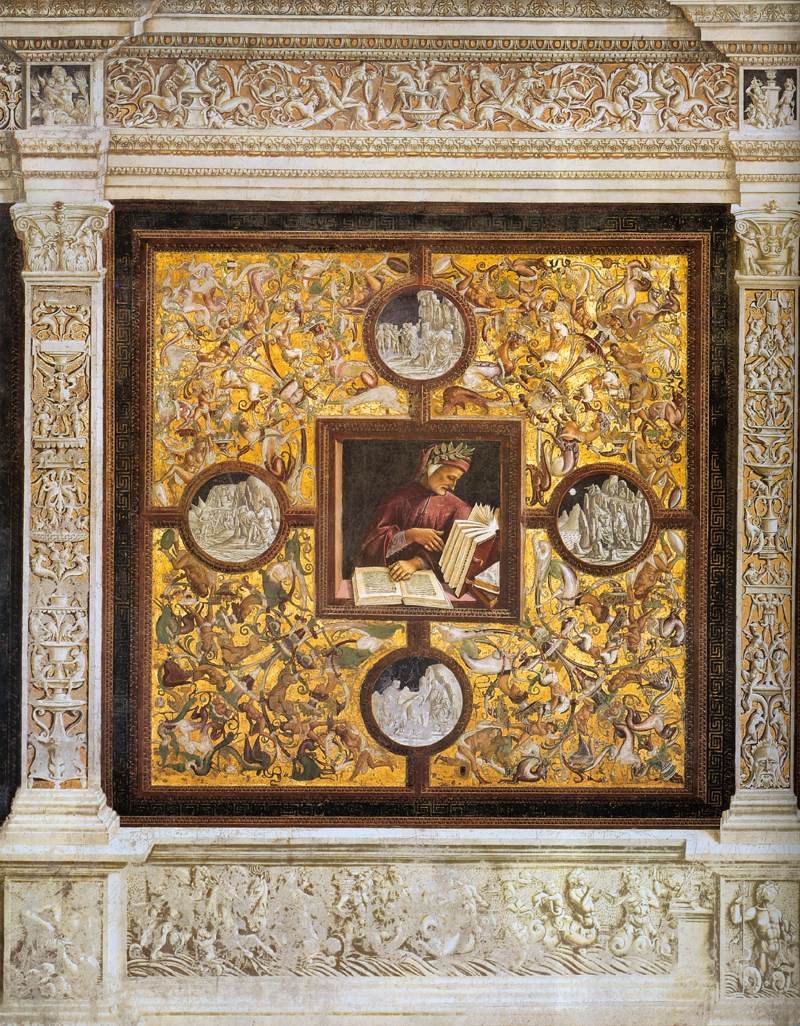
Dante Alighieri |
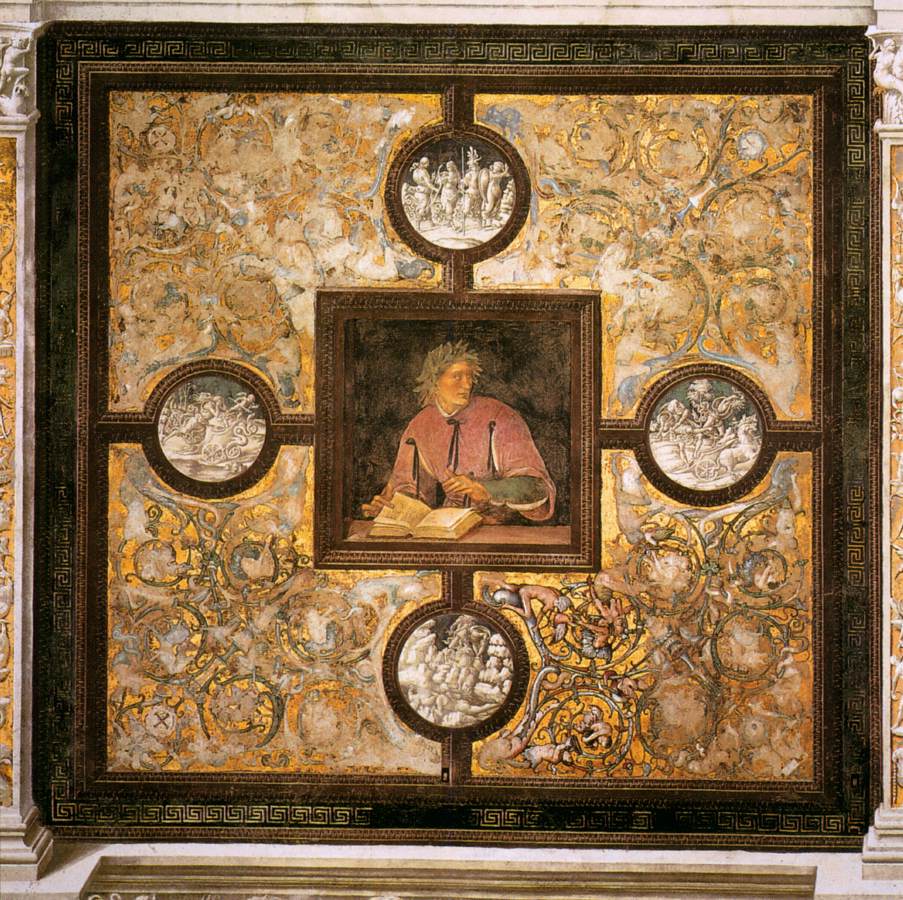
Dante and Virgil Entering Purgatory |

The Angel Arrives in Purgatory |

Virgil |

Empedocles |

Doctors of the Church |

The Virgins |
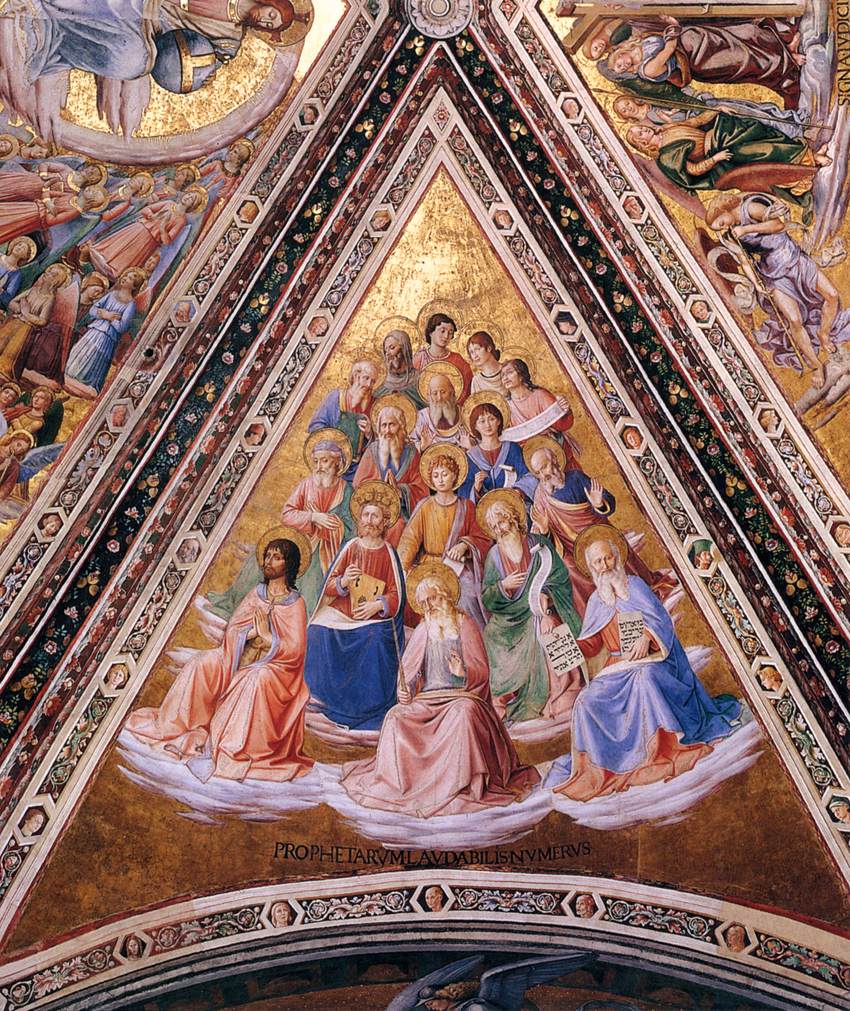
Prophets Fra Angelico |
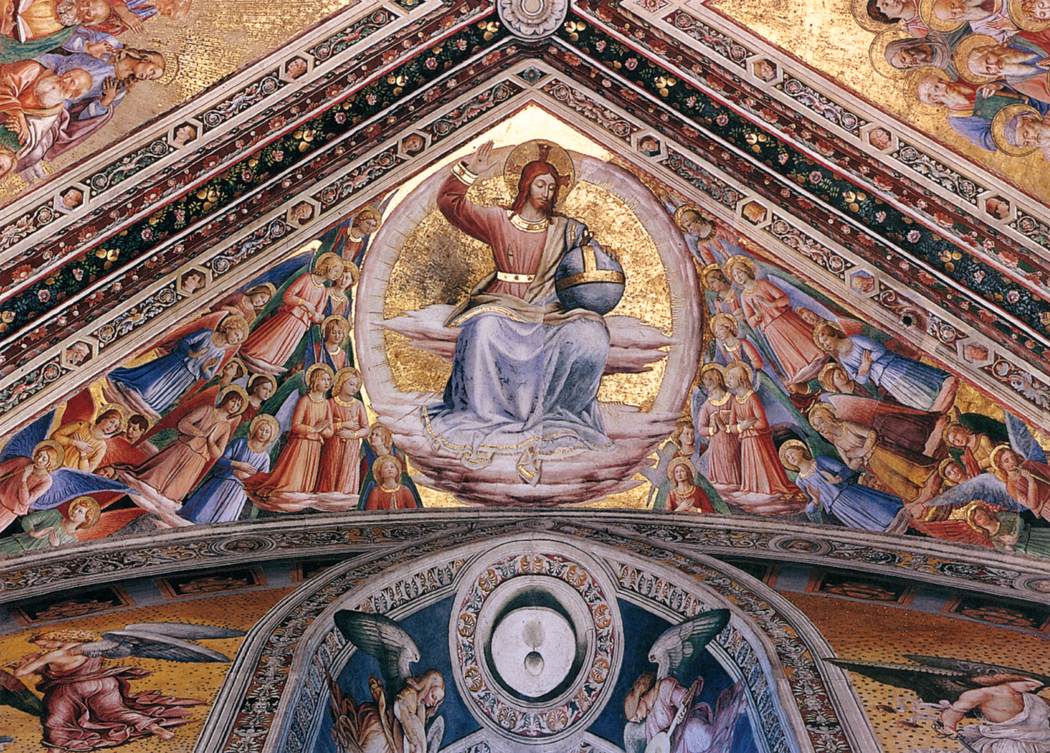
Christ the Judge Fra Angelico |
|---|

North Wall Entry |

South Wall with Ceiling |

East Wall above |

East Wall below |

West Wall above |

West Wall below |
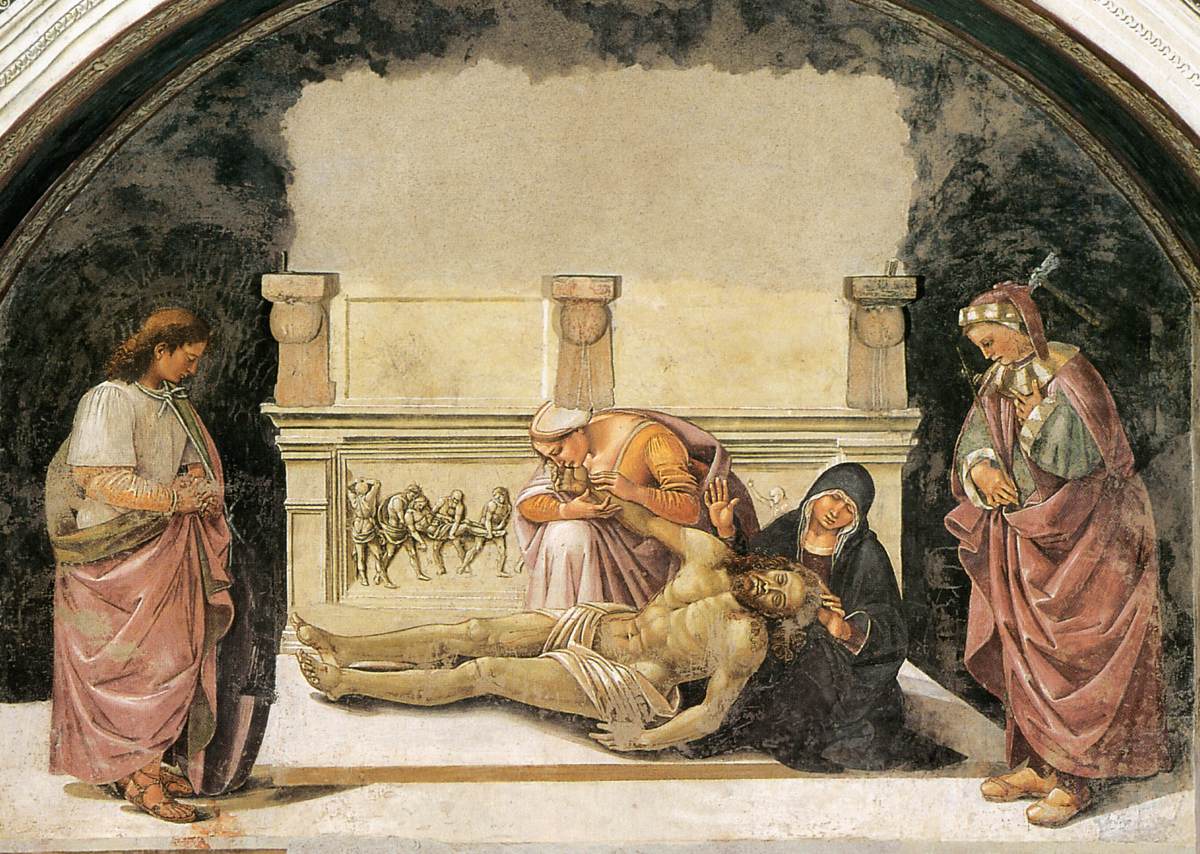
Lamentation below Ressurrection |
|---|
The Archaeological Museum is housed in a beautiful palazzo, just across the piazza from the Duomo. Along with fantastic view of the Cathedral façade, just out the front windows, it houses a large collection Greek and Etruscan vases. Unfortunately, no pictures (hardly any on the web either).








